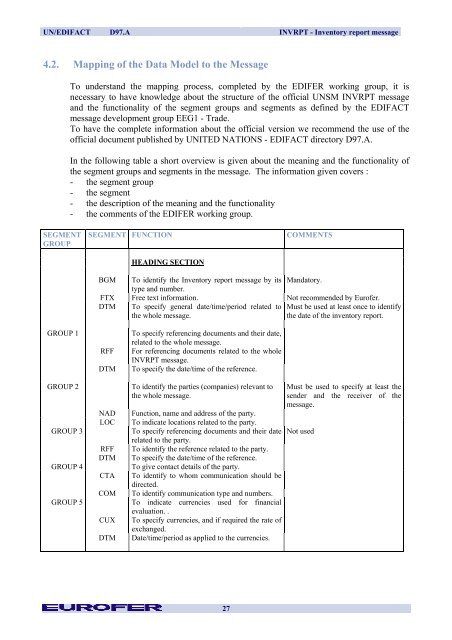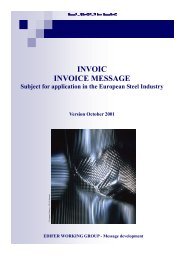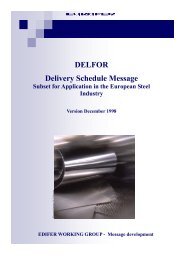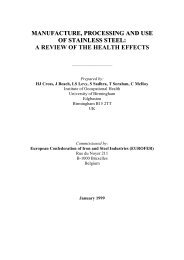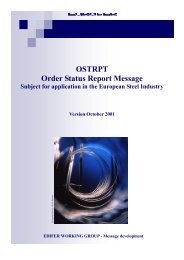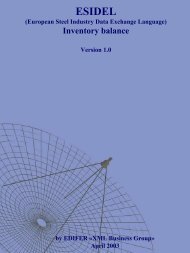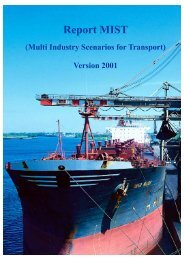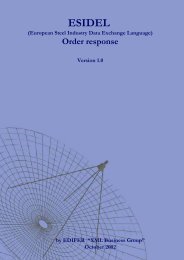INVRPT Inventory Report Message - Eurofer
INVRPT Inventory Report Message - Eurofer
INVRPT Inventory Report Message - Eurofer
Create successful ePaper yourself
Turn your PDF publications into a flip-book with our unique Google optimized e-Paper software.
UN/EDIFACT D97.A <strong>INVRPT</strong> - <strong>Inventory</strong> report message<br />
4.2. Mapping of the Data Model to the <strong>Message</strong><br />
SEGMENT<br />
GROUP<br />
To understand the mapping process, completed by the EDIFER working group, it is<br />
necessary to have knowledge about the structure of the official UNSM <strong>INVRPT</strong> message<br />
and the functionality of the segment groups and segments as defined by the EDIFACT<br />
message development group EEG1 - Trade.<br />
To have the complete information about the official version we recommend the use of the<br />
official document published by UNITED NATIONS - EDIFACT directory D97.A.<br />
In the following table a short overview is given about the meaning and the functionality of<br />
the segment groups and segments in the message. The information given covers :<br />
- the segment group<br />
- the segment<br />
- the description of the meaning and the functionality<br />
- the comments of the EDIFER working group.<br />
SEGMENT FUNCTION COMMENTS<br />
HEADING SECTION<br />
BGM To identify the <strong>Inventory</strong> report message by its Mandatory.<br />
type and number.<br />
FTX Free text information. Not recommended by <strong>Eurofer</strong>.<br />
DTM To specify general date/time/period related to Must be used at least once to identify<br />
the whole message.<br />
the date of the inventory report.<br />
GROUP 1 To specify referencing documents and their date,<br />
related to the whole message.<br />
RFF For referencing documents related to the whole<br />
<strong>INVRPT</strong> message.<br />
DTM To specify the date/time of the reference.<br />
GROUP 2 To identify the parties (companies) relevant to<br />
the whole message.<br />
NAD Function, name and address of the party.<br />
LOC To indicate locations related to the party.<br />
GROUP 3 To specify referencing documents and their date<br />
related to the party.<br />
RFF To identify the reference related to the party.<br />
DTM To specify the date/time of the reference.<br />
GROUP 4 To give contact details of the party.<br />
CTA To identify to whom communication should be<br />
directed.<br />
COM To identify communication type and numbers.<br />
GROUP 5 To indicate currencies used for financial<br />
evaluation. .<br />
CUX To specify currencies, and if required the rate of<br />
exchanged.<br />
DTM Date/time/period as applied to the currencies.<br />
27<br />
Must be used to specify at least the<br />
sender and the receiver of the<br />
message.<br />
Not used


